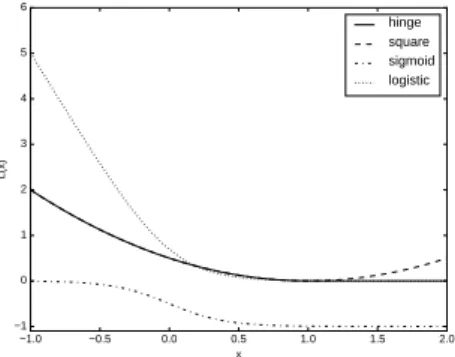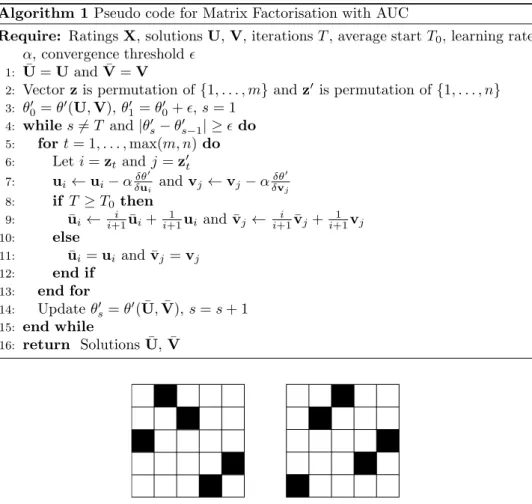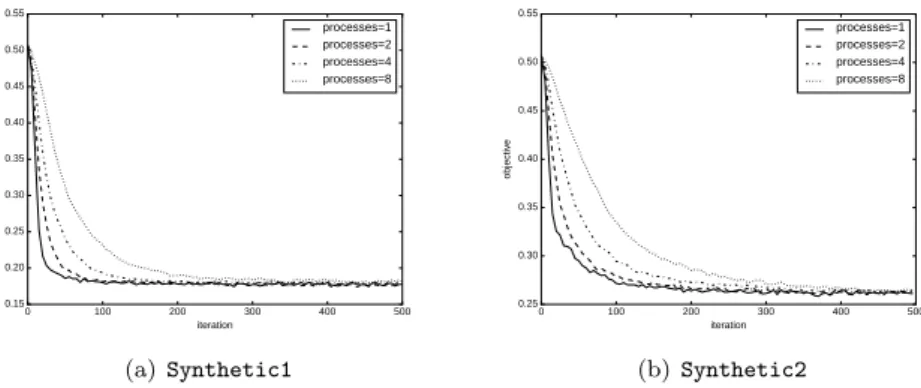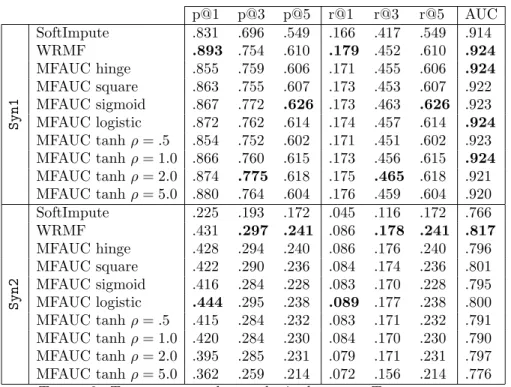AUC Optimisation and Collaborative Filtering
Texte intégral
Figure




Documents relatifs
Such distorted preference ratings are subsequently submitted as users’ feedback to recommender systems, which can potentially lead to a biased view of consumer preferences
Final PETA conversion determined by FTIR measurements upon irradiation with a laser diode@635 nm using different photoinitiating systems.(3Fc stands for Fc-CO 2 Me)
Our next test was to rank the conformations in the CAPRI ensembles, and count the number of acceptable or better solutions in the top 10. Table 3 shows the results obtained using GA,
In an A/B test comparisons of these two variants, we have demonstrated that pairwise preferences can be more effective, if compared with ratings, to model user preferences in
Past work on the evaluation of recommender systems indicates that collabora- tive filtering algorithms are accurate and suitable for the top-N recommendation task.. Further,
Finally, weighted trust propagation is considered, aiming to distinguish trusted neighbors in a shorter distance with those in a longer distance and incorporate more trust-
In this work we propose and study an approach for collabora- tive filtering, which is based on Boolean matrix factorisation and exploits additional (context) information about users
In this paper, under the framework of user-based collaborative filtering, we adopted six structure-based similarity indices, namely Common Neighbors, Salton Index, Jaccard


